Paganism in 2023 – An Introduction
Introduction To Paganism
Paganism is a diverse and multifaceted religion that has been practiced throughout history. Despite its long and complex history, many people are still unfamiliar with the origins and development of Paganism.
In this blog post, we will explore the origins of Paganism, tracing its evolution from prehistoric times to the present day.
Paganism is rooted in the religious practices of prehistoric people. Prehistoric religion was a complex and multifaceted system that was centered on nature and the worship of ancestors.
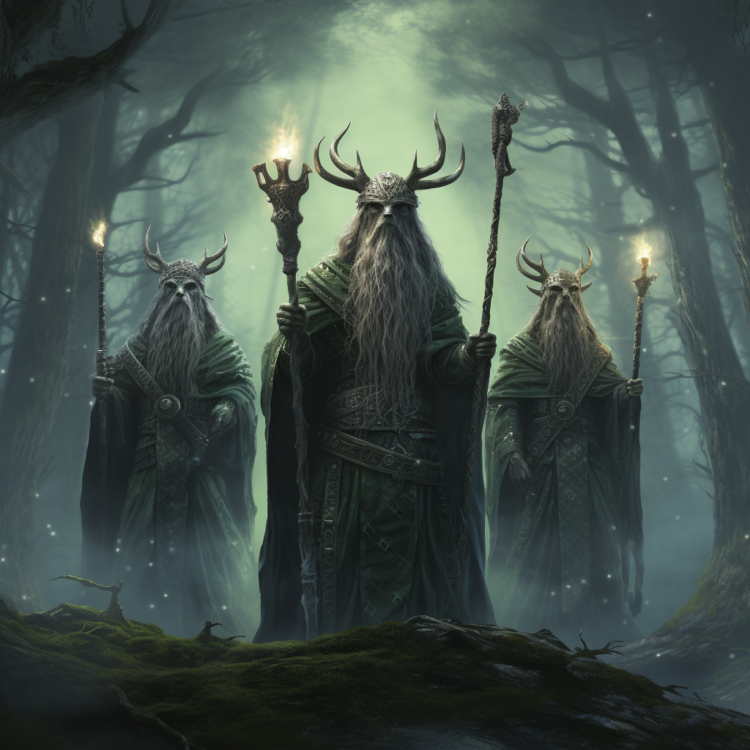
Animism, the belief that all things possess a spiritual essence, was an important aspect of prehistoric religion. Ancestor worship was also common, with prehistoric people believing that their ancestors could influence the world of the living.
Definition of Paganism
Paganism is a term used to describe a group of diverse spiritual and religious beliefs and practices that are generally characterized by a focus on nature and the natural world.
The term “pagan” comes from the Latin word “pagani,” which means “rural” or “rustic,” and was originally used by early Christians to describe people who lived in rural areas and practiced polytheistic religions.
Paganism encompasses a wide range of beliefs and practices that are often based on the worship of multiple deities or spirits, and may involve the use of rituals, magic, and divination.
Many pagan traditions are rooted in ancient religious practices that predate the Abrahamic religions (Judaism, Christianity, and Islam), and some pagan beliefs and practices have been incorporated into modern forms of spirituality.
It’s important to note that the term “paganism” is often used as a catch-all for a variety of different belief systems, and there is no single set of beliefs or practices that define paganism.
Some of the more well-known pagan traditions include Wicca, Druidism, and Asatru, but there are many other forms of paganism that exist as well.
Brief history of Paganism
Paganism is a broad term used to describe various pre-Christian religions and belief systems, often characterized by polytheistic or animistic traditions. The history of paganism is complex and diverse, spanning many cultures and regions throughout human history.
Here is a brief overview of some of the major historical developments and movements in paganism:
- Ancient Paganism: Paganism has been present since ancient times, with many civilizations practicing various forms of animism, polytheism, and nature worship. These include the Greek, Roman, Egyptian, Norse, and Celtic cultures, among many others.
- Christianization: With the rise of Christianity in the Roman Empire, many pagan religions were suppressed or forced underground. Over time, many of these traditions were either abandoned or incorporated into Christian practices, resulting in the emergence of various syncretic religions.
- Revival Movements: In the 19th and 20th centuries, there was a renewed interest in pagan traditions, fueled in part by a rejection of Christianity and a desire to reconnect with ancient spiritual practices. This gave rise to various pagan revival movements, such as Wicca, Druidry, and Asatru.
- Modern Paganism: Today, paganism encompasses a diverse range of spiritual practices and beliefs, often characterized by a focus on nature, cycles of the seasons, and reverence for the divine feminine. Modern paganism is often seen as a response to the perceived shortcomings of mainstream religions, offering a more individualistic and ecologically conscious approach to spirituality.
Prehistoric Paganism
Prehistoric paganism refers to the religious beliefs and practices of ancient cultures that existed before the advent of written history.
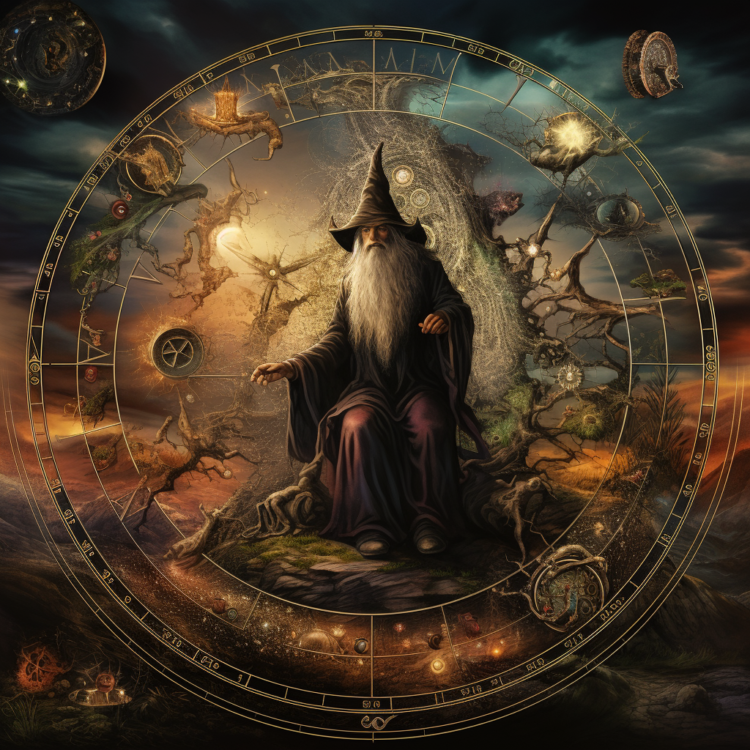
These ancient cultures are typically defined as prehistoric because they did not have a system of writing, so our knowledge of their religious beliefs and practices comes from archaeology and anthropology.
Paganism is a term used to describe a wide range of polytheistic religions that worship multiple gods and goddesses.
Prehistoric paganism includes many different belief systems and practices, depending on the specific culture and time period. Some prehistoric pagans worshiped a pantheon of gods and goddesses, while others focused on nature spirits, ancestor worship, or shamanic practices.
Examples of prehistoric pagan cultures include the ancient Egyptians, Greeks, Romans, Celts, and Norse. These cultures developed complex religious beliefs and practices, often involving rituals, sacrifices, and ceremonies that were intended to honor and appease their deities.
Prehistoric paganism was an integral part of many ancient cultures and played a significant role in shaping their worldviews, social structures, and daily lives.
The Role of Nature in Prehistoric Religion
Nature played a significant role in prehistoric religion. In many ancient societies, people believed in animism, the belief that all natural phenomena, such as animals, plants, rocks, rivers, and mountains, possess a spirit or soul. They saw nature as sacred and believed that it had a direct influence on their lives.
Prehistoric people saw nature as a source of food, shelter, and clothing, and they believed that it was the domain of powerful spirits and gods.
They worshiped the sun, the moon, the stars, and the elements, such as fire and water.
They also believed in the existence of various animal spirits, and many prehistoric cave paintings depict animals, such as bison, horses, and deer, which are believed to have been revered as sacred.
The worship of nature played a crucial role in the development of many prehistoric religions. For example, in ancient Egypt, the Nile River was seen as a deity, and the people of the Nile Valley worshiped it for its life-giving properties.
Similarly, in ancient Greece, many gods and goddesses were associated with natural phenomena, such as the god of the sea, Poseidon, and the goddess of the harvest, Demeter.
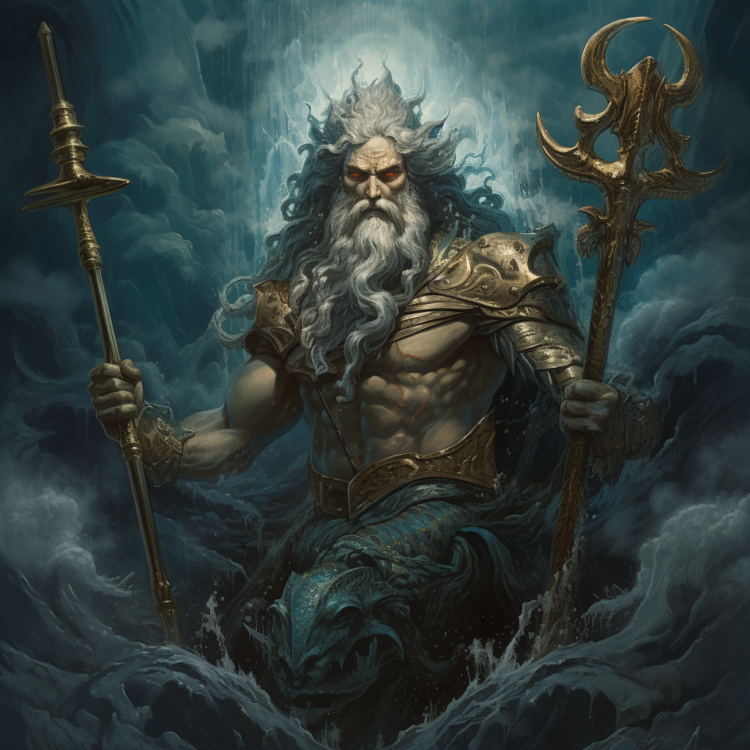
Overall, the prehistoric religion was deeply rooted in the worship of nature, and people believed that they were connected to the natural world in a fundamental way.
They saw nature as a source of inspiration, wonder, and reverence, and their religious beliefs were shaped by their interactions with the natural world.
Animism and ancestor worship are two distinct but related religious practices that have been present in human societies throughout history.
The Development of Animism and Ancestor Worship
Animism is the belief that everything in nature, including plants, animals, and inanimate objects, has a spirit or soul. This belief system is based on the idea that all things have a life force or energy, which can be tapped into and used for various purposes.
The origins of animism are difficult to trace, as it is likely that it has existed in some form since the earliest human societies. However, it is generally believed to have been particularly prevalent in hunter-gatherer societies and early agricultural societies.
Ancestor worship, on the other hand, is the belief that one’s ancestors have the ability to influence the world of the living, and can provide protection, guidance, and blessings.
This belief system is based on the idea that one’s ancestors continue to exist in some form after death, and that they can be communicated with through various means, such as prayer, offerings, or ceremonies. Ancestor worship is believed to have developed in many different cultures around the world, and is often associated with the concept of filial piety, or respect for one’s elders and ancestors.
The development of animism and ancestor worship can be seen as a natural outgrowth of human experiences and observations of the natural world.
Early humans would have had to rely on their knowledge of the environment and its inhabitants in order to survive, and would have observed patterns and connections between different elements of the natural world.
Over time, these observations would have been woven into a complex web of beliefs and practices, which would have been passed down from generation to generation.
As human societies became more complex and stratified, the practices of animism and ancestor worship also evolved, taking on new forms and meanings.
For example, in many cultures, ancestor worship became intertwined with ideas of political legitimacy and dynastic succession, with rulers claiming descent from powerful ancestors in order to justify their rule.
Similarly, in some cultures, animistic beliefs became integrated into more formalized religious systems, such as shamanism or spiritism.
Today, animism and ancestor worship continue to be practiced in various forms around the world, often in conjunction with other religious or spiritual traditions.
While the specific practices and beliefs associated with these traditions vary widely, they continue to provide a powerful connection to the natural world and to the wisdom and guidance of one’s ancestors.
Importance of Studying the Origins of Paganism
Studying the origins of Paganism is important for several reasons:
- Historical Understanding: Understanding the origins of Paganism helps us to gain a deeper historical understanding of the societies and cultures that practiced this religion. It can provide insights into their beliefs, customs, and practices, and help us to better understand their worldview.
- Cultural Diversity: Paganism is a diverse set of religious traditions that has existed in many different parts of the world. By studying its origins, we can gain a deeper appreciation for the diversity of human culture and the ways in which people have sought to make sense of the world around them.
- Modern Paganism: The study of the origins of Paganism is also important for understanding modern Paganism. Many modern Pagan traditions draw on ancient Pagan practices and beliefs, and understanding the origins of these traditions can help us to better understand modern Paganism and its place in contemporary society.
- Comparative Religion: Studying the origins of Paganism can also help us to better understand the broader field of comparative religion. By examining the similarities and differences between Paganism and other religions, we can gain insights into the ways in which different cultures have sought to understand the spiritual and supernatural aspects of the world.
In summary, studying the origins of Paganism is important for gaining historical understanding, appreciating cultural diversity, understanding modern Paganism, and advancing the field of comparative religion.
Ancient Paganism
Ancient Paganism emerged in the ancient world, with cultures such as the Egyptians, Greeks, and Romans developing their own unique religious traditions. Ancient religion was characterized by a rich mythology and a pantheon of gods and goddesses, with each deity representing different aspects of the natural world.
Rituals and sacrifices were an important part of ancient Paganism, with offerings made to the gods in exchange for their blessings.
Examples of Ancient Religious Practices
Ancient religious practices encompassed a wide range of beliefs and rituals that shaped the spiritual lives of civilizations throughout history.
These practices varied greatly across different cultures and regions, reflecting the diverse ways in which ancient societies sought to understand and connect with the divine. Here are a few notable examples of ancient religious practices:
- Ancient Egyptian Religion: The ancient Egyptians worshiped a multitude of gods and goddesses, believing in an afterlife and the importance of mummification. They constructed elaborate temples dedicated to their deities, with priests performing rituals and offerings to maintain cosmic balance and secure blessings. The pharaoh, as the divine ruler, played a central role in religious ceremonies and was believed to be the intermediary between the gods and the people.
- Greek Mythology and Rituals: In ancient Greece, religion played a significant role in all aspects of life. The Greeks believed in a pantheon of gods headed by Zeus, and each deity represented different aspects of human existence. Religious practices included public sacrifices, processions, and festivals to honor the gods. The Olympic Games were also originally held as a religious festival dedicated to Zeus.
- Norse Mythology and Shamanism: The ancient Norse religion, practiced by the Vikings and other Germanic tribes, centered around gods like Odin, Thor, and Freya. Norse religious rituals included sacrifices, feasts, and ceremonies to honor the gods and seek their favor. Shamanism was also a prominent aspect of Norse spirituality, with shamans, known as seers or volvas, acting as intermediaries between the human and spirit worlds.
- Aztec Rituals and Sacrifices: The Aztec civilization in Mesoamerica had a complex religious system centered around numerous gods, particularly the sun god Huitzilopochtli. Aztec rituals involved human sacrifices as offerings to the gods, often performed during major religious festivals. These sacrifices played a crucial role in maintaining the cosmic order and ensuring the fertility of the land.
These examples illustrate the diverse nature of ancient religious practices, showcasing the significant role that spirituality played in the lives of ancient civilizations. They highlight the unique ways in which these societies sought to establish connections with the divine, preserve cosmic balance, and find meaning in the world around them.
The role of mythology in ancient religion
Mythology played a fundamental role in ancient religions, serving as a rich tapestry of stories, beliefs, and explanations that helped shape the religious practices and worldview of ancient civilizations.
Here are some key aspects of the role of mythology in ancient religion:
- Creation and Origin Stories: Mythology often provided explanations for the creation of the world and the origins of humanity. Ancient societies used mythological narratives to understand how the world came into existence, how the gods and goddesses were born, and how humans were connected to the divine realm. These creation stories served as foundational myths, offering a sense of purpose, identity, and the relationship between the divine and the human.
- Divine Hierarchy and Characteristics: Mythology helped define the characteristics and roles of various deities within a pantheon. It outlined their powers, personalities, and relationships with one another. These myths provided guidance on how to worship and interact with the gods, as well as the consequences of displeasing them. By understanding the divine hierarchy and attributes, believers could navigate the complexities of their religious practices and seek favor or protection from specific deities.
- Moral and Ethical Lessons: Mythological stories often contained moral and ethical lessons that guided the behavior and values of believers. These narratives conveyed societal norms, virtues, and warnings against certain behaviors. Ancient religious texts, such as the Greek myths or the Hindu epics like the Ramayana and Mahabharata, offered examples of heroism, loyalty, justice, and the consequences of hubris or moral transgressions. Mythology provided a framework for understanding the proper conduct expected by both the divine and human realms.
- Rituals, Festivals, and Symbolism: Mythology influenced the rituals, festivals, and symbols associated with ancient religious practices. Stories of gods and goddesses were reenacted through rituals and ceremonies, allowing believers to participate in the mythic narratives and connect with the divine. Symbolic representations and sacred objects were used to invoke the presence of deities or embody specific mythological elements. These practices fostered a sense of unity, community, and devotion among worshippers.
- Exploring the Unknown and the Afterlife: Mythology often delved into the realms of the unknown, including the afterlife and the supernatural. Ancient religions employed myths to provide glimpses into the mysteries of death, the soul’s journey, and the nature of the afterlife. These stories provided comfort, hope, and reassurance about the continuity of existence beyond death, as well as the possibility of rewards or punishments in the afterlife based on one’s actions in the mortal realm.
Mythology served as a crucial framework for ancient religions, offering explanations for creation, defining the characteristics of deities, imparting moral lessons, influencing rituals, and addressing the mysteries of life and death.
It provided a narrative backdrop that infused religious practices with meaning, context, and a sense of connection to the divine.
Mythology helped believers make sense of their world, understand their place within it, and navigate the complexities of their religious beliefs and rituals.
The Development of Polytheism
The development of polytheism, the belief in multiple gods and goddesses, can be attributed to several factors that influenced the religious beliefs and practices of ancient societies.
Here are some key factors that contributed to the development of polytheism:
- Nature Worship and Animism: Many early human societies practiced nature worship and animism, believing that natural phenomena, such as the sun, moon, rivers, and mountains, possessed spiritual powers.
As these societies evolved and developed more complex belief systems, they began to personify these natural forces, attributing them with individual personalities and divine qualities.
Over time, these personifications gave rise to a pantheon of gods and goddesses representing various aspects of nature and human existence. - Cultural and Ethnic Interactions: As ancient civilizations expanded and came into contact with one another through trade, conquest, and migration, there was an exchange of ideas, beliefs, and religious practices.
This interaction often led to the merging or assimilation of different deities and pantheons, resulting in a polytheistic framework.
For example, the Hellenistic period in ancient Greece saw the amalgamation of Greek, Egyptian, and Persian religious traditions. - Socio-Political Factors: In some cases, polytheism served socio-political purposes. The rulers and elite classes of ancient civilizations often used religion as a means to consolidate power and maintain social order.
By promoting a pantheon of gods, each with their own spheres of influence, rulers could appeal to various segments of society and ensure a sense of unity. The priests and priestesses associated with these gods held significant influence and played a vital role in religious rituals and ceremonies. - Anthropomorphism and Human Needs: Polytheism provided ancient societies with a framework that incorporated anthropomorphic deities—gods and goddesses with human-like qualities, emotions, and personalities.
This anthropomorphism made the gods relatable and understandable to humans, allowing for a more personal and interactive form of worship.
Polytheistic belief systems addressed various human needs, such as fertility, protection, healing, love, and guidance, through different deities, offering believers a sense of security and fulfillment in different aspects of life. - Complexity and Specialization: Polytheism allowed for a complex religious system that encompassed a wide range of gods and goddesses, each associated with specific domains, such as war, agriculture, wisdom, or craftsmanship.
This specialization allowed for a more nuanced understanding of different facets of human existence and provided devotees with specific deities to turn to for their unique needs or concerns.
It’s important to note that the development of polytheism varied across different cultures and regions, and the specific factors and influences may have differed in each case.
Polytheism provided ancient societies with a comprehensive framework that reflected their understanding of the world, the forces that shaped it, and their place within it.
Paganism in the Classical World
During the classical era, Paganism continued to evolve and flourish. The ancient traditions of Greece and Rome continued to influence the religious beliefs of the Mediterranean world, with many people adopting their pantheon of gods and goddesses. However, classical Paganism was also influenced by the rise of philosophy and the spread of monotheistic religions such as Christianity.
Overview of classical religion
Classical religion refers to the religious beliefs and practices of ancient civilizations, such as those of Greece, Rome, Egypt, and Mesopotamia. These religions were polytheistic, meaning they worshiped multiple gods and goddesses, each of whom had a specific role or domain.
Here is an overview of some of the key features of classical religion:
Polytheism: As mentioned, classical religions worshiped many gods and goddesses. For example, the Greek pantheon included gods like Zeus, Poseidon, and Athena, while the Roman pantheon included Jupiter, Mars, and Venus.
Mythology: Classical religions had rich mythologies, which explained the origins of the universe, the relationships between the gods, and the stories of heroic figures. These myths were often represented in art, literature, and drama.
Rituals: Classical religions had elaborate rituals and ceremonies that were performed to honor the gods and ask for their blessings. For example, in ancient Greece, people would hold festivals to honor particular gods, such as the Olympic Games, which were held to honor Zeus.
Sacrifice: Classical religions often involved animal sacrifice as a way of appeasing the gods. These sacrifices were seen as a way of giving something back to the gods in exchange for their protection and favor.
Afterlife: Classical religions had beliefs about what happened after death. For example, the ancient Egyptians believed in an afterlife where the soul would journey to the “Field of Reeds” and live forever in a paradise-like state.
Classical religion played a significant role in shaping the cultures and societies of the ancient world, and many of its ideas and practices continue to influence modern religions and spiritual practices.
Examples of classical religious practices
Classical religious practices refer to the traditional and long-established practices that are followed by various religions. Here are some examples of classical religious practices from different religions:
- Christianity:
- Prayer: Christians engage in prayer as a way of communicating with God.
- Reading the Bible: The Bible is considered the holy book of Christianity, and reading it is a common practice among Christians.
- Baptism: It is a Christian sacrament that involves the immersion in or sprinkling of water on the head, as a symbol of purification and initiation into the faith.
- Communion: It involves the sharing of bread and wine or grape juice as a remembrance of the last supper of Jesus Christ.
- Islam:
- Prayer: Muslims perform five daily prayers as a way of communicating with Allah.
- Fasting: It is observed during the month of Ramadan, where Muslims abstain from food, drink, and other physical needs from dawn until sunset.
- Hajj: It is a pilgrimage to Mecca that Muslims are required to make at least once in their lifetime, if they are physically and financially able to do so.
- Zakat: It is a form of charity given by Muslims to the poor and needy.
- Hinduism:
- Puja: Hindus offer prayers and make offerings to their deities through a ritual called Puja.
- Yagna: It is a ritualistic sacrifice, often involving offerings made into a fire.
- Holi: It is a festival of colors, which is celebrated in the spring season to welcome the new season.
- Diwali: It is a festival of lights, celebrated in the fall season to celebrate the triumph of good over evil.
- Buddhism:
- Meditation: Buddhists practice meditation to develop mindfulness and compassion.
- Chanting: Buddhists chant mantras as a form of spiritual practice.
- Vesak: It is a festival that commemorates the birth, enlightenment, and death of the Buddha.
- Offering food to monks: It is a practice in which Buddhists offer food to the monks, to support their spiritual practice.
These are just a few examples of classical religious practices from different religions. There are many more practices that are observed by different religions.
The Influence of Classical Religion on Later Paganism
Classical religion, particularly the polytheistic beliefs of ancient Greece and Rome, had a significant influence on later forms of paganism. Many pagan traditions and beliefs that emerged in Europe and the Americas during the modern era draw upon elements of classical religion.
One of the most direct ways in which classical religion influenced later paganism is through the incorporation of Greco-Roman gods and goddesses into modern pagan pantheons. For example, the Greek god Pan and the Roman goddess Diana are commonly worshiped in contemporary pagan circles.
Classical mythology also continues to be an important source of inspiration for modern pagans. Many modern pagan rituals and practices draw on stories and symbols from Greek and Roman mythology, such as the use of the labyrinth as a meditative tool or the invocation of deities like Apollo or Athena for specific purposes.
Additionally, classical philosophy, particularly the works of Plato and Aristotle, has also had a lasting impact on modern paganism. The concept of the soul, for example, is an important part of many pagan belief systems and can be traced back to Platonic philosophy.
Classical religion also helped to shape the way that modern pagans view and relate to the natural world. The classical idea of animism, the belief that everything in the world has a spiritual essence or life force, has been adopted by many modern pagans as a central tenet of their faith. This belief in the interconnectedness of all things is often expressed through practices like nature worship or the use of divination tools like tarot cards.
In summary, classical religion played a significant role in shaping the development of later forms of paganism, both in terms of the gods and goddesses that are worshiped and the philosophical and spiritual concepts that underpin many modern pagan belief systems.
Paganism in the Middle Ages
The spread of Christianity had a profound impact on Paganism during the Middle Ages. As Christianity became the dominant religion in Europe, many Pagan practices were suppressed or driven underground. Despite this, Paganism continued to exist in the form of folk traditions and beliefs. In some parts of Europe, Paganism survived in the form of witchcraft and other forms of magic.
Overview of Paganism in the Middle Ages
Paganism in the Middle Ages was a diverse set of religious beliefs and practices that were not associated with Christianity, the dominant religion of the time. The term “pagan” was originally used by early Christians to refer to non-Christians, particularly those who adhered to the polytheistic religions of the ancient Greeks and Romans. However, the term was also used more broadly to refer to a wide variety of other non-Christian religious traditions.
During the Middle Ages, pagan beliefs and practices continued to be present in many parts of Europe, particularly in rural areas where traditional customs and beliefs were less affected by the spread of Christianity. In some cases, pagan beliefs were incorporated into Christian traditions, particularly in the form of folk customs and superstitions.
In northern and eastern Europe, pre-Christian religions continued to be practiced by various groups, such as the Norse and the Slavs. These religions were based on the worship of gods and goddesses associated with nature, and often involved rituals and sacrifices.
The Church, however, viewed paganism as a threat to its authority and actively sought to suppress pagan beliefs and practices. The Church encouraged the conversion of pagans to Christianity and often used force and violence to enforce its beliefs. As a result, many pagan traditions and practices were lost or went underground, while others were transformed or adapted to fit within Christian traditions.
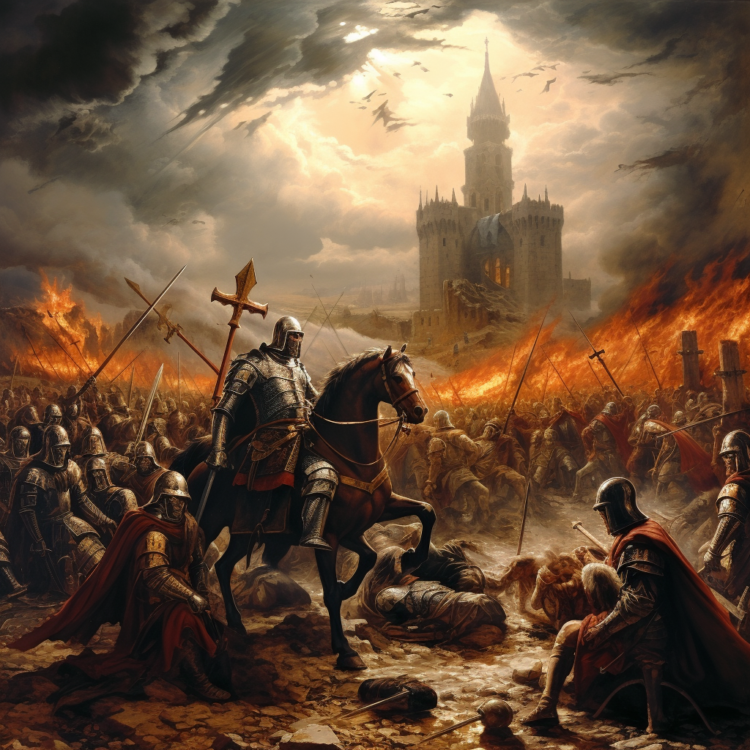
Despite the efforts of the Church, however, pagan beliefs and practices continued to exist in various forms throughout the Middle Ages, and would continue to influence later religious and cultural movements in Europe.
Examples of Medieval Paganism
Medieval paganism refers to the pre-Christian religions of Europe that existed during the Middle Ages, from roughly the 5th to the 15th century. Here are some examples of medieval paganism:
Norse Paganism: Also known as Old Norse religion, it was practiced in Scandinavia during the Viking Age and beyond. The Norse gods such as Odin, Thor, and Freyja were worshiped, and rituals involved offerings of food, drink, and animals.
Celtic Paganism: The Celtic peoples had their own unique religious practices that varied by region and time period. They worshiped a variety of deities, including the god Lugh and the goddess Brigid, and conducted rituals at sacred sites such as stone circles and wells.
Slavic Paganism: This was the polytheistic religion of the Slavic peoples in Eastern Europe, which included the worship of gods such as Perun and Veles. Offerings were made at shrines and temples, and divination was also practiced.
Finnish Paganism: The pre-Christian religion of the Finnish people, also known as Finnish mythology, involved the worship of gods such as Ukko and Tapio, and the use of charms and spells.
Anglo-Saxon Paganism: The religion of the Anglo-Saxon people in England, it involved the worship of gods such as Woden and Thunor, and the performance of rituals such as animal sacrifices and divination.
It’s important to note that the term “medieval paganism” is somewhat broad, and the specific practices and beliefs of these religions varied over time and by region.
The impact of Christianity on Paganism during the Middle Ages
During the Middle Ages, Christianity had a significant impact on Paganism in many parts of Europe. The spread of Christianity led to the conversion of many Pagans to Christianity, and as a result, many Pagan beliefs and practices were replaced by Christian ones.
One of the most significant ways in which Christianity impacted Paganism was through the conversion of Pagan temples and holy sites into Christian ones. Many Pagan temples and shrines were destroyed, while others were converted into Christian churches. This allowed for the Christianization of previously Pagan places of worship, which played a role in the conversion of many Pagans to Christianity.
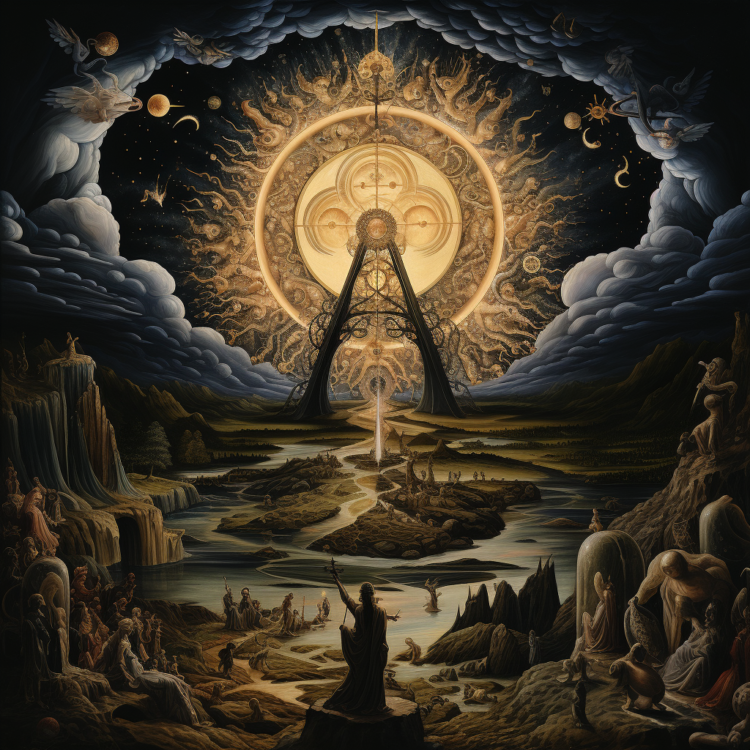
Christianity also had an impact on Pagan art, literature, and mythology. Many Christian stories and themes were incorporated into Pagan art and literature, and Pagan myths were reinterpreted through a Christian lens. This helped to establish a Christian cultural influence that replaced much of the Pagan cultural tradition.
In addition, Christian leaders often denounced Pagan practices and beliefs as being immoral or sinful. This led to the suppression of many Pagan customs and practices, and sometimes even the persecution of Pagans themselves. This further contributed to the decline of Paganism and the spread of Christianity throughout the Middle Ages.
Overall, the impact of Christianity on Paganism during the Middle Ages was significant. While Paganism continued to exist in some parts of Europe, Christianity largely replaced it as the dominant religion and cultural force in many regions.
Modern Paganism
Modern Paganism, also known as contemporary Paganism, is a diverse religious movement that draws inspiration from various pre-Christian, indigenous, and folk traditions from around the world. While modern Pagans may draw on the mythology, symbolism, and practices of these ancient traditions, they do not attempt to recreate them exactly as they were practiced in the past.
Instead, modern Pagans adapt these traditions to suit their own needs and beliefs, often incorporating elements of modern spirituality, environmentalism, and personal growth. Modern Paganism encompasses a wide range of beliefs, practices, and traditions, and it continues to grow and evolve as new people are drawn to this diverse and dynamic spiritual path.
In the modern era, Paganism has experienced a resurgence, with many people rediscovering the spiritual and cultural traditions of their ancestors. Modern Paganism is a diverse and eclectic movement that draws on a variety of sources, including ancient traditions and modern spirituality. Many modern Pagans embrace nature-based spirituality and celebrate the cycles of the seasons.
Examples of Modern Pagan Practices
Modern Paganism is a diverse movement with many different paths and practices, so there is no single answer to this question. However, here are a few examples of modern Pagan practices that you might find:
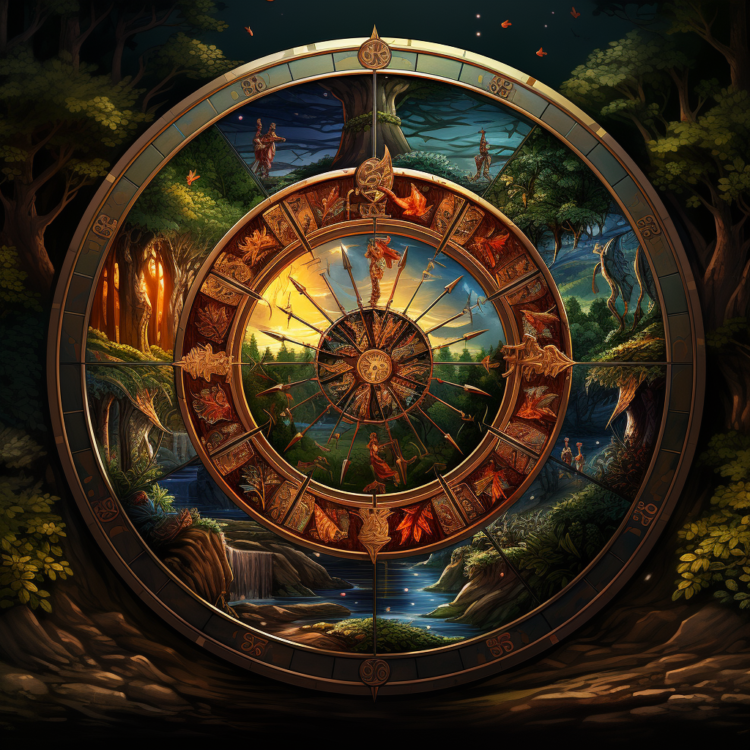
- Celebrating the Wheel of the Year: Many modern Pagans celebrate the eight seasonal festivals that make up the Wheel of the Year, including the solstices, equinoxes, and cross-quarter days. These celebrations often involve rituals, feasting, and connecting with the natural world.
- Working with deities: Many modern Pagans have a personal relationship with one or more deities, whom they may honor with offerings, prayers, or rituals. Some may also work with spirit guides, ancestors, or other non-human entities.
- Witchcraft: Some modern Pagans practice witchcraft, which can include a variety of techniques such as spell-crafting, divination, and energy work. Witchcraft can be practiced alone or in groups, and may draw on a variety of spiritual traditions.
- Nature-based spirituality: Many modern Pagans feel a deep connection to the natural world and seek to honor and protect it. This can involve practices such as meditation in natural settings, environmental activism, and using eco-friendly products.
- Meditation and mindfulness: Many modern Pagans incorporate meditation and mindfulness practices into their spiritual lives as a way of connecting with the divine and developing a deeper understanding of themselves and the world around them.
The Development of Modern Paganism
The roots of modern Paganism can be traced back to the late 19th and early 20th centuries, when a number of scholars and authors became interested in pre-Christian European and Mediterranean religions. These early pioneers, often referred to as the “pagan revivalists,” sought to reestablish connections with the natural world, honor ancestral traditions, and reclaim the spiritual wisdom of their forebears.
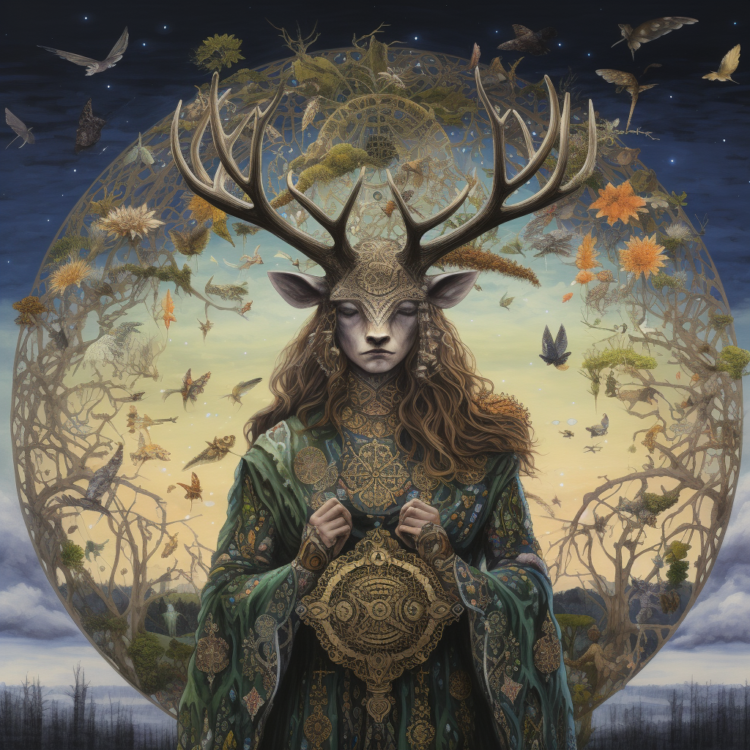
In the 1950s and 60s, the British occultist Gerald Gardner founded a new religious movement that he called “Wicca.” Gardner claimed that he had been initiated into an ancient pagan witchcraft tradition that had survived underground for centuries, and he sought to bring this tradition back into the mainstream. Gardner’s teachings emphasized the worship of a goddess and god, the use of magic, and the celebration of the cycles of nature.
Over the next several decades, the Wiccan movement grew and evolved, and new traditions and offshoots emerged. In the United States, feminist witches, often referred to as “Dianic Wiccans,” sought to create a form of Paganism that focused on the divine feminine and women’s empowerment. Other groups, such as the Reclaiming tradition and Feri tradition, developed their own unique approaches to Paganism.
In addition to Wicca, a variety of other Pagan traditions emerged during the latter half of the 20th century. These included Heathenry, a revival of Germanic and Scandinavian pre-Christian religion; Druidry, a spiritual path inspired by the ancient Celtic druids; and Hellenic polytheism, which is based on the worship of the gods and goddesses of ancient Greece.
Today, modern Paganism is a thriving and diverse movement that encompasses a wide range of spiritual practices, beliefs, and traditions. It continues to evolve and grow, as practitioners seek to connect with the natural world, honor the wisdom of their ancestors, and forge new paths of spiritual discovery.
Wrap Up To Paganism
The origins of Paganism are complex and multifaceted, spanning thousands of years of human history. From prehistoric animism to the rich mythology of the ancient world,
Paganism has evolved and adapted over time, influenced by changing cultural and religious landscapes.
Today, Paganism continues to thrive, offering a rich and diverse spiritual path for those who seek it. Whether through ancient traditions or modern innovations, Paganism remains a vibrant and enduring expression of human spirituality.
One reason for the continued relevance of Paganism today is that it often emphasizes a deep connection to the natural world, which is particularly important in an era of environmental crisis.
Many Pagans view the Earth as a sacred and living entity, and seek to honor and protect it through their spiritual practices. This can include engaging in rituals and ceremonies that celebrate the changing seasons, performing environmental stewardship work, and adopting sustainable living practices.
Paganism also offers a way for people to connect with ancient cultural and spiritual traditions that may have been lost or suppressed over time. Many Pagan traditions draw on mythology and folklore from a wide variety of cultural sources, and offer a way for people to reconnect with their ancestral roots and heritage.
In addition, Paganism can offer a sense of community and belonging for those who feel alienated or excluded by mainstream religions. Many Pagan communities are inclusive and welcoming, and offer opportunities for personal growth and spiritual development.
It is important to note that Paganism is a diverse and multifaceted movement, and there is no single set of beliefs or practices that defines it. As such, the relevance of Paganism today will depend on the specific beliefs and practices of the individuals and communities who identify as Pagan.
In recent decades, there has been a resurgence of interest in Paganism in many parts of the world, particularly in Europe and North America.
One reason for the resurgence of Paganism may be a reaction against mainstream religions and their perceived lack of connection to the natural world. Paganism offers a spirituality that is often focused on nature, and many Pagans see the earth and its creatures as sacred.
Another factor that may contribute to the growth of Paganism is the availability of information and resources online. The internet has made it easier for people to connect with others who share their beliefs, and to access information about Pagan practices and traditions.
However, it’s worth noting that Paganism remains a relatively small and diverse movement, and its future growth and development may depend on a number of factors, including social and political trends, changes in technology, and broader cultural attitudes towards religion and spirituality.
Additionally, Paganism’s decentralized and diverse nature means that it may not necessarily follow a linear or predictable trajectory in the coming years.
